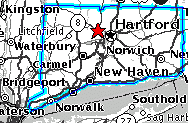

One of the great culinary experiences that one can experience is the pleasure of a relaxing Dim Sum lunch. When we were living in San Francisco, we would make bi-weekly pilgrimages to Yank Sing, our favorite Dim Sum house on Stevenson Street. When you walked into Yank Sing, the energy of the dining room would hit you immediately. Hordes of people sitting at small, white tableclothed tables while servers milled about with large steam carts filled with savory dumplings. When you saw something you wanted, you would point (well, if you were uncouth white folks, you would point... we spent the time to learn enough Cantonese so we could order properly). Once you have had your fill, they tally up the number of dishes that you had and present a check.
Since we were moving into what we feared to be white-on-whitesville, we figured that there would be no more Dim Sum for us unless we took a trip to Boston or New York City. However, we learned from Ko, the owner/chef of Fuji Japanese Restaurant, that there was a place that served Dim Sum on Sundays... and a couple of months ago, we made our first trip to Green Tea.
Though Green Tea only offers 20 or so Dim Sum items (ranging from shrimp dumplings to taro buns to chicken feet and beef tripe), everything is very well prepared and very reasonably priced. Unfortunately, they do not come around with steam carts at Green Tea, but they make up for it by making each set of dumplings to order. Some highlights of the Dim Sum Service:
Har Gao (Shrimp Dumplings): Har Gao is a small translucent clam-shell shaped dumpling made with a slightly elastic rice flour wrapper. A sign of good Har Gao is that the shrimp has a firm texture and delicate flavor. If the shrimp is mushy, then it is over-steamed.
Char Siu Bao (Barbequed Pork Buns): The snow-white rice flour bun of the Bao (bun) should crack ever so slightly to expose the deep red Char Siu (roast pork) in the center. Green Tea's Char Siu Bao might be the best I have ever had.
Siu Mai (Pork and Cloud Ear Mushroom Dumplings): Originally a Japanese dumpling, the Chinese have incorporated it into the Dim Sum service. A dense mixture of ground pork and mushrooms is stuffed into a glutinous wheat wrapper and steamed.
Kuo Teh (Pan-Fried Potsticker Dumplings): Potstickers, the most common Chinese crescent-shaped dumplings, are made by filling a won-ton wrapper with pork, chicken or vegetables. Green Tea uses roasted pork and ginger as the filling.
Pu Erh (aka Bo-Li) Tea: A strong black tea, Pu Erh is available at most Chinese restaurants, but is not usually sold to non-Chinese unless specifically (and some times emphatically) requested.
XO Sauce / Sambal: This ground pepper and oil mixture is always served with Dim Sum. Place a little on your plate and mix with Soy Sauce to create a dipping sauce for the dumplings.